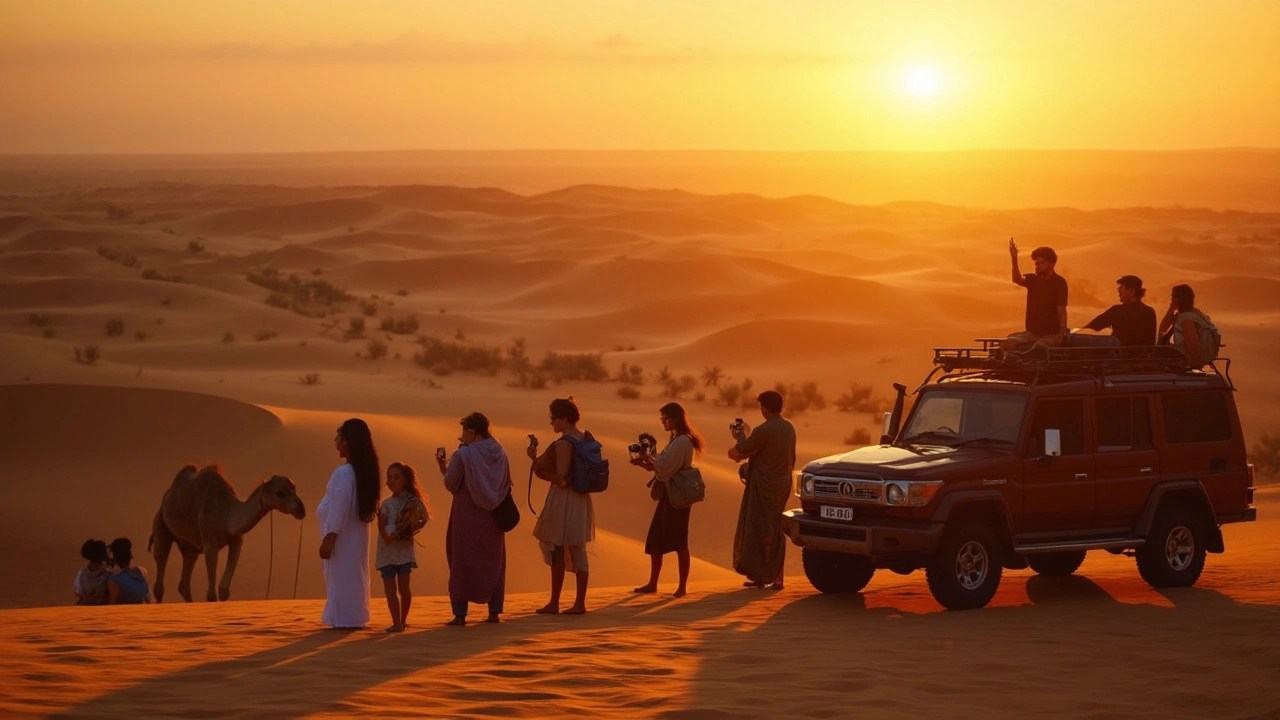Desert Photography: Capture the Magic of Dubai’s Sands
Ever stood on a golden dune and wished you could freeze that endless horizon? Desert photography lets you turn heat, light, and texture into striking images. Whether you’re a newbie or have a camera for years, the desert offers a playground that rewards simple, practical moves. Below are the basics you need to start snapping great desert shots right away.
Essential Gear for Desert Shoots
First, protect your gear. A sturdy camera bag, lens cloths, and a UV filter keep sand out of lenses and sensor. A wide‑angle lens (24‑35mm) captures the sweeping dunes, while a telephoto (70‑200mm) isolates patterns you spot from a distance. Bring extra batteries – the heat drains power fast – and a memory card with room for large RAW files. If you can, pack a lightweight tripod for low‑light sunrise or sunset scenes.
Practical Shooting Tips
Set your camera to manual mode. A low ISO (100‑200) reduces noise in bright daylight. Keep aperture around f/8‑f/11 for sharp depth of field across the sand and sky. Adjust shutter speed to match the light; you’ll often need 1/500 s or faster when the sun is high. Use spot metering on a mid‑tone part of the dune to avoid blown‑out highlights.
Sun position is everything. Early morning and late evening give you soft, warm light that adds texture without harsh shadows. If you shoot at midday, look for clouds or use a reflector to soften contrast. Position the sun behind your subject for dramatic silhouettes – a lone camel or a lone palm tree becomes a powerful focal point.
Composition can turn a plain scene into a story. Lead the eye with the curve of a dune, place the horizon low to emphasize sky, or frame a small oasis against endless sand. Try the rule of thirds, but don’t be afraid to break it when a pattern draws the viewer’s gaze.
Stay safe and comfortable. Hydrate before you step out, wear a hat, and use sunscreen. Keep your camera covered when you’re not shooting to stop sand from getting into the body. A small scarf can double as a lens wipe and a shield against blowing grit.
After the shoot, bring the images into a simple editing workflow. Increase clarity a bit to bring out dune textures, adjust white balance if the sand looks too orange, and consider a slight vignette to focus attention on the center. Don’t over‑process – the desert’s natural colors are already stunning.
Now you have a clear plan: pack the right gear, master basic settings, chase the best light, and frame your shots with purpose. Go out, feel the heat, and let the dunes tell their story through your lens. Happy shooting!
Dubai Desert Safari: Capturing Perfect Moments from Sunrise to Sunset
This article reveals how to capture unforgettable moments during a desert safari in Dubai, with a strong focus on sunrise and sunset experiences. It provides practical tips on timing, locations, and photography techniques tailored to Dubai’s unique environment. Explore local traditions, recommended safari providers, and UAE-specific experiences. Learn how to avoid common mistakes and make your desert safari photos stand out. Perfect for residents, expats, and tourists keen to create real memories in the Dubai desert.

